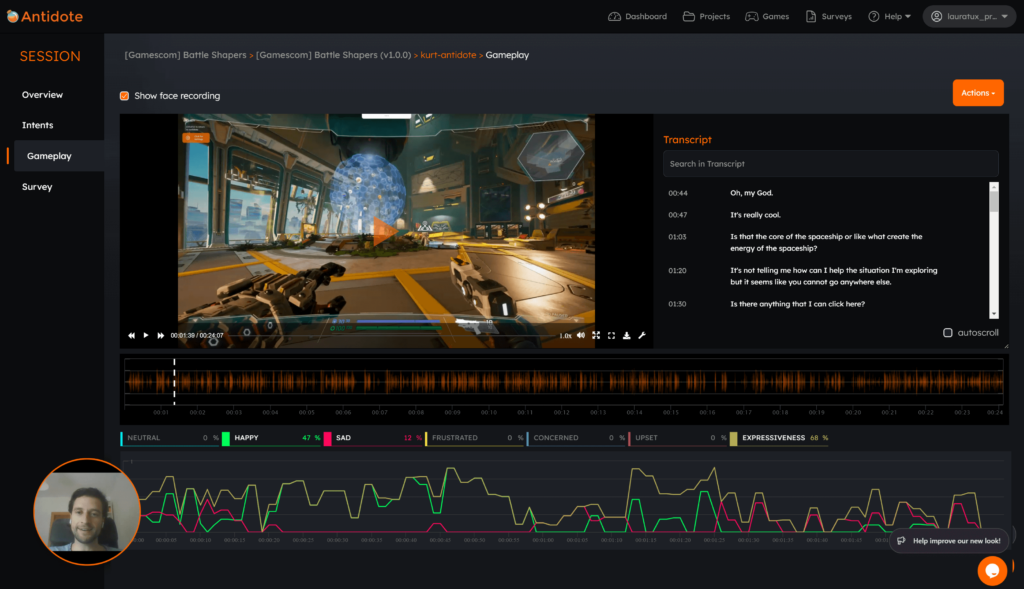Watch the full episode: Balancing UX and Business Goals in Game Development (Game UX Alchemists Podcast)
In episode 4 of Game UX Alchemists, the team discusses one of the most ongoing tensions in game development: balancing great player experience with business goals.
When you’re juggling UX priorities, deadlines and revenue targets, things can get messy fast.
So, how do you find that sweet spot between what’s good for players and what stakeholders want to see on paper?
Here are the key takeaways from this talk:
UX Is Here to Inform, Not Fight Business Goals
Let’s start with some basics.
UX research isn’t here to tell studios what not to do. It’s here to show what players are really experiencing, so teams can make informed decisions.
In practice, that means surfacing:
- confusion
- drop-off points
- player frustrations
- and offering clear evidence on how these issues affect long-term retention.
Researchers help stakeholders make informed decisions by grounding discussions in real player behavior.
In-house teams can feel pressure to hit revenue targets while an external UX partner (like Antidote) sits outside that politics.
Because we’re independent, we can flag uncomfortable data with total objectivity and give stakeholders a clear, unfiltered view of player reality.
This balance is especially tricky when UX findings point out problems with revenue-driven features like in-app purchases or onboarding flows that prioritize engagement metrics over clarity.
When studios ignore UX insights or treat them as optional, they often end up with games that hit short-term goals but struggle with long-term engagement.
Not All Monetization Is Created Equal
The team discussed a range of monetization strategies.
Tactics like battle passes and cosmetics that don’t impact gameplay were generally seen as the healthy middle ground. These allow studios to drive revenue while keeping the player experience intact.
Players are willing to spend money – but only when the system feels optional and respectful.
For example, models like pay-to-win, limited lives or hard progression blocks tied to purchases can sometimes be considered harmful to player trust.
Remember, roughly 8-10 % of players (the ‘whales’) often generate about half of a free-to-play game’s revenue. Thoughtful UX keeps those big spenders happy and ensures the other 90 % still enjoy the game, growing tomorrow’s whales.
- When playtests flag mechanics that feel unfair, UX data helps reframe them into player-friendly versions
- When playtests uncover a dark pattern, the team reports it transparently (always written in a nice way, backed by player quotes and impact data). This allows studios to weigh the trade-offs with their eyes wide open
Systems that reward players with cosmetic upgrades, expanded content or added convenience (without locking core gameplay behind a paywall) tend to strike a better balance between revenue and retention.
Fake Retention Leads to Real Drop-Off
Daily logins, time-gated content and streak rewards were brought up as examples of “fake” retention systems.
Tactics designed to get players to open the game every day, but not necessarily because they’re having fun.
Instead of building meaningful engagement through gameplay, story or progression, these features trick players into showing up just to “not lose” a reward. That kind of retention is fragile and fades fast, often leading to uninstall rates when players feel manipulated or overwhelmed.
True retention comes from organic engagement.
Building systems and experiences that keep players coming back because they enjoy the gameplay, not because they’re afraid of missing out.
Final Thoughts
This wasn’t a debate about who’s right: UX or the boardroom.
It was a reminder that great games come from teams that know how to balance both.
Yes, you need to hit your revenue goals. But if your game isn’t fun, fair or understandable, players won’t stick around to spend anyway.
- Good UX drives retention
- Retention drives revenue
- It’s not one vs. the other
It’s a long-term loop and the best studios know how to keep it going.
Hope you enjoyed this episode! Stay tuned… more great conversations coming your way soon 🫡



